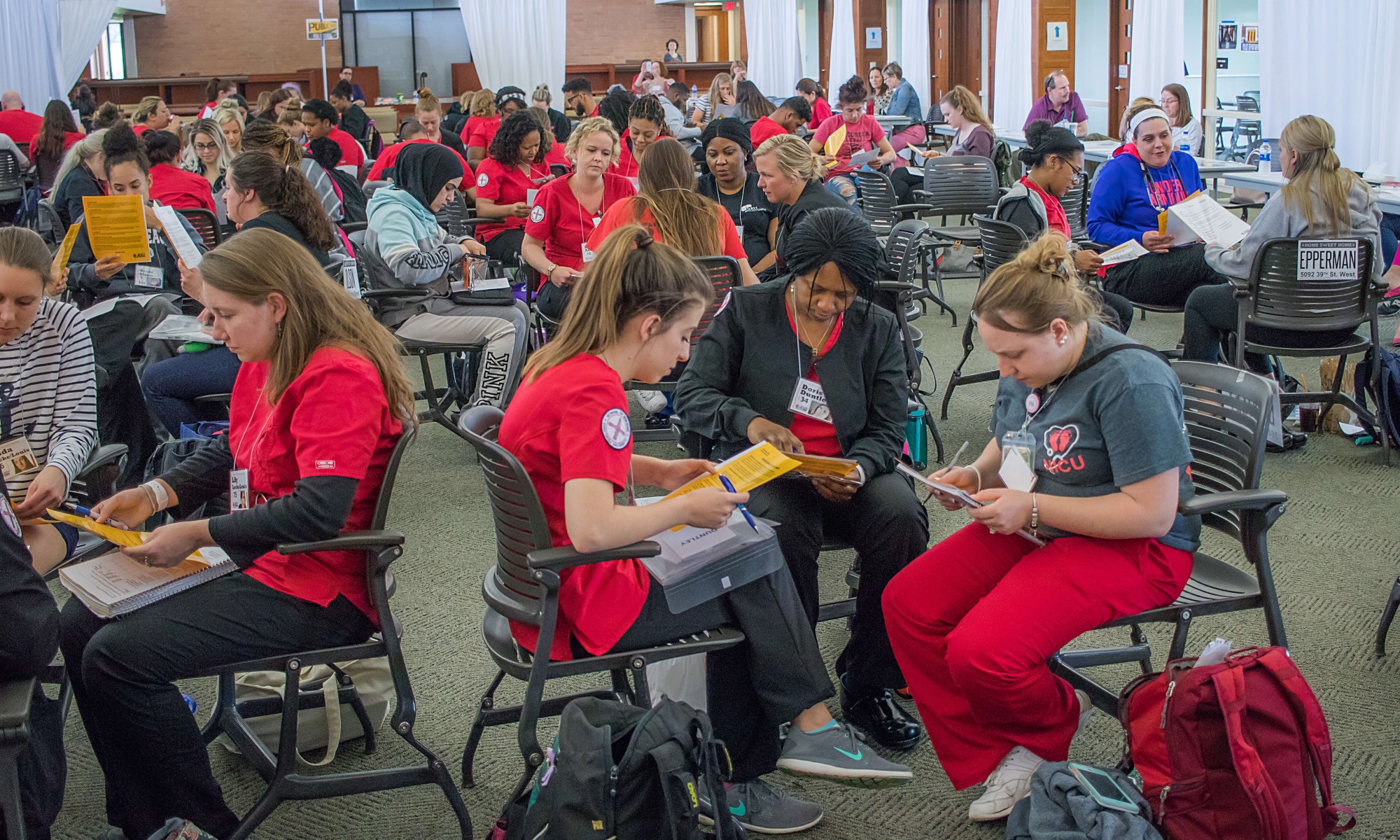
What if you started the month with a $10 bill to meet your family's basic needs? How is the complexity of living in poverty altered when you are disabled, a senior citizen, or a recipient of federal assistance?
65 Concordia University Ann Arbor students experienced the virtual realities of poverty and the everyday decisions that low-income families encounter through a unique poverty simulation conducted on May 21 by CUAA’s School of Nursing.
The Community Action Poverty Simulation (CAPS) was designed to help students better understand the realities of poverty so that they can more empathetically and effectively provide care to future patients in these scenarios. Nursing students were tasked with different scenarios and interacting with 23 “participants” – faculty and staff from various academic departments at Concordia, who played the roles of grocers, pawnbrokers, bill collectors, job interviewers, police officers, teachers, and more.
 “We are thrilled by the way this program helped our nursing students understand the complexities and frustrations of living in poverty day to day,” said Anita Simmons, School of Nursing’s director of simulation. “With a greater awareness of its impact, our students will be able to more effectively address poverty issues when working with patients.”
“We are thrilled by the way this program helped our nursing students understand the complexities and frustrations of living in poverty day to day,” said Anita Simmons, School of Nursing’s director of simulation. “With a greater awareness of its impact, our students will be able to more effectively address poverty issues when working with patients.”
Throughout the three-hour simulation, the nursing students had the stressful task of providing basic necessities and shelter on a limited budget during the course of four 15-minute “weeks.” Although play money is used, CAPS is not a game. This simulation enables participants to look at poverty from a variety of angles and then to recognize and discuss the potential for change within their local communities.
According to 2017 data from the University of Michigan Poverty Solutions, 12.7 percent of people in the United States have incomes below the poverty line which is an annual income of $24,250 income for a family of four. The poverty rate in Michigan is 15 percent with 14.6 percent of the population living below poverty level in Washtenaw County alone.
“This simulation helps participants recognize ‘intangible invaluables’ such as time, efficiency, and predictable expenditures. Walking in someone else’s shoes helps to cultivate understanding and cultural sensitivity,” said Peggy McLaughlin, associate professor of nursing at CUAA.
Students in Concordia’s School of Nursing spend at least 90 minutes per week in simulation labs for the entire six semesters of their nursing curriculum. Simulations are based on the di-dactic material covered in the classroom that week, including both nursing-focused simulations and IPE simulations that integrate students from other majors and professional fields on campus.
In addition to the five, high-acuity simulation rooms, the School of Nursing features a simulation apartment, assessment lab with eight exam rooms, a 10-bed skills lab, and pod-style learning stations to facilitate student collaboration.
View a tour of CUAA’s North Building
Concordia University Ann Arbor launched its first cohort of students – named the Alpha Class – in fall 2016. With the help of the summer 2018 semester under their belts, the Alpha class will be the first CUAA School of Nursing cohort to graduate this December, in 2 ½ years.
To learn more about CUAA’s School of Nursing, visit www.cuaa.edu/nursing.
— Rachel Thoms served on Concordia University's Strategic Communications team from 2015-2022. Any inquiries about this story can be sent to news@cuaa.edu.
If this story has inspired you, why not explore how you can help further Concordia's mission through giving.